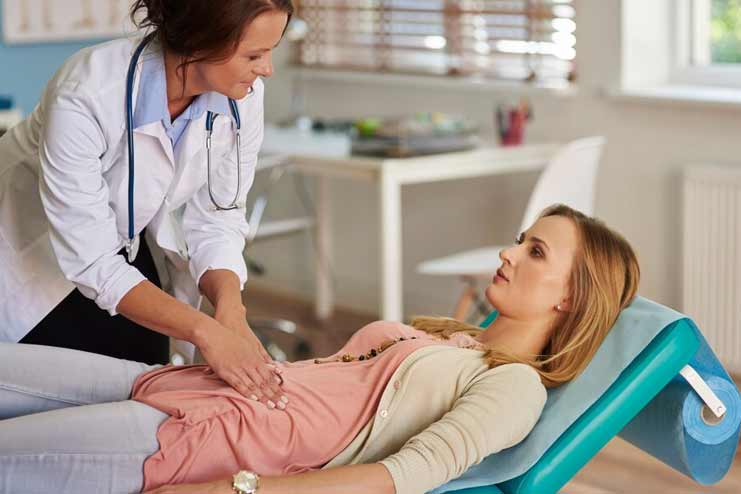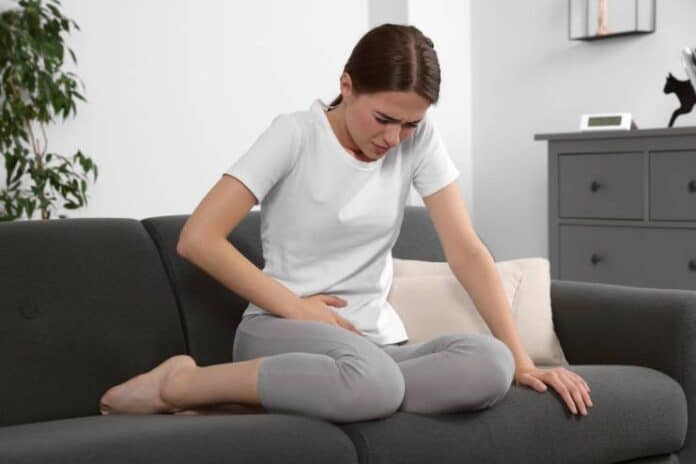Affiliate Disclaimer
Some links in this article are affiliate links. We may earn a small commission if you make a purchase through these links, at no extra cost to you. We only recommend products we find useful to our readersPelvic floor disorders refer to various functional disorders related to the muscular and connective tissue parts supporting or surrounding the pelvic organs. These include urinary incontinence, fecal incontinence, and pelvic organ prolapse.
Such disorders cause discomfort in the form of pelvic pain, which affects daily life and general well-being. Millions around the world experience pelvic floor disorders, the majority being women. Therefore, there is a need for awareness and education.
One must know the causes, symptoms, and treatment for prevention, treatment, and pain management. However, identification of these factors may help women have better health and reduce discomfort and limitations related to pelvic floor disorders.
What Are Pelvic Floor Disorders?

Pelvic floor disorders are conditions that cripple the muscles and ligaments that support pelvic organs, such as bladder, rectum, uterus, or prostate. These muscles are essential in maintaining pelvic health—continence of bowel movement, urination, and sexual function.
Pelvic floor dysfunction happens when these muscles become weak or do not work normally.
Common pelvic floor disorders include:
1. Pelvic Organ Prolapse: This is a condition where pelvic organs – bladder, rectum, or uterus – fall from their normal position, pushing into the vaginal canal. Following are the various types of prolapse:
- Cystocele: Bladder falls into the vagina.
- Urethrocele: Urethra bulges into the vagina.
- Enterocele: Small intestine pushes the back side of the vagina.
- Rectocele: Rectum bulges into the vagina.
- Uterine Prolapse: The uterus drops into the vagina.
- Vaginal Vault Prolapse: The top of the vagina falls into or outside the vaginal canal.
2. Urinary Incontinence: It is the loss of voluntary control in passing urine, typically due to the downward shift of the bladder or urethra from its normal position. Types of urinary incontinence include:
- Stress Incontinence: Leakage during an activity that stresses the bladder, such as coughing, laughing, or lifting heavy objects.
- Urge Incontinence: When there is a sudden urge to urinate that can’t be controlled, involuntary urine loss takes place. It is referred to as an overactive bladder.
3. Fecal Incontinence: It is the loss of voluntary control over the passing of stools. This may happen when the rectum slips out of place or when the muscles that keep the anus closed are damaged.
Causes of Pelvic Floor Disorders
Several factors cause PFDs, leading to consequent deterioration in quality of life. Here are some of the common causes of Pelvic Floor Disorders:
- Childbirth: This might lead to stretched and weakened pelvic floor muscles and connective tissue, especially if labor is prolonged or difficult.
- Aging: Causes muscles to lose strength and elasticity with advancing age.
- Surgeries: Pelvic surgeries like hysterectomies can result in PFDs due to damage to the normal anatomy and function of pelvic muscles.
- Chronic Strain: Often associated with heavy lifting, chronic coughing, or constipation, it can overload them and lead to muscle dysfunction.
- Genetics: In some instances, genetic predisposition could be an influencing factor for making one more susceptible to PFDs.
- Obesity: Obesity increases pressure on the pelvic floor and further weakens the muscles.
- Menopause: During menopause, hormonal changes reduce muscle mass and elasticity, increasing the risk of developing PFDs.
Symptoms of Pelvic Floor Disorders
Importance of Early Recognition of Symptoms
With early identification of these signs of pelvic floor disorders, timely action can be taken, including changes to personal habits, exercise programs, and medical treatments.
Contact your doctor for a thorough diagnosis and treatment plan if you are experiencing any of these common symptoms of PFDs:
- Pelvic Pain: a long-standing discomfort or pain in the pelvic area. Sometimes, the pain radiates to the lower back, genitals, or rectum.
- Urinary Urgency: A sudden urge or need to urinate frequently, associated with difficulty initiating or completing urinating. Sometimes, it could be painful.
- Bowel Disturbances: Chronic constipation is one of the symptoms. Strain during defecation or a feeling of incomplete evacuation must be noted. Some patients may also complain of fecal incontinence.
- Sexual Pain: Pain during intercourse, predominantly among females, ranks as one of the major symptoms and affects sexual health and relationships.
- Pressure or Heaviness: The pressure or feeling of fullness in the pelvis or rectum is caused by a prolapsed pelvis due to weakened muscles.
Diagnosing Pelvic Floor Disorders

Role of Healthcare Professionals
Gynecologists, urologists, and physical therapists actively diagnose and treat pelvic pain. Gynecologists and urologists can perform diagnostic tests and review the results to create a treatment plan.
Meanwhile, physical therapists specializing in pelvic floor health examine various muscle functions and provide nonsurgical treatment options. This approach helps us plan an effective treatment plan.
Pelvic Floor Disorder diagnosis starts with describing the medical history and symptoms to a doctor. Physical examination is done to evaluate muscle strength and coordination and to determine any manifestation of organ prolapse or muscle spasms.
Imaging tests can provide clear images of the structure of the pelvic floor and showcase abnormalities or muscle damage. These tests are instrumental, and a healthcare professional looks into the internal organs and muscles to find out what is causing pain or dysfunction in the pelvis. These tests include:
- Ultrasounds
- MRIs
- X-rays
Specialized tests like urodynamic testing check bladder and urethral function during the storage and emptying of urine to diagnose urinary symptoms associated with PFDs.
Other specialized tests include anorectal manometry to measure the muscular activity in the rectum and anus to check bowel-related symptoms.
Treatment Options for Pelvic Floor Disorders

Pelvic Floor Disorder treatment aims to relax the pelvic floor muscles, relieve symptoms like difficulty passing stools, and improve control. Several options can effectively treat this disorder and provide pelvic pain relief.
- Pelvic floor disorders can be treated using a variety of treatments, mainly dependent on the condition and severity.
- Pelvic Floor Physical Therapy: This therapy for pelvic floor is used to identify and work on tense pelvic muscles. Therapists teach exercises to stretch and strengthen key muscles, improve coordination, and decrease symptoms.
- Biofeedback: Pelvic floor dysfunctions can be treated with biofeedback and physical therapy. This is a process in which sensors and video are used to monitor the pelvic floor muscles as patients relax or clench the muscles. The therapist then provides advice on how to improve muscle coordination.
- Medications: Daily stool softeners may be needed to soften the stool. Using these medications will cause less strain and exertion on the pelvic floor.
- Relaxation Techniques: Warm baths, yoga, and acupuncture can help relieve the tightness in the pelvic floor, which helps relieve symptoms and promote general well-being.
- Trigger Point Injections: When patients show no improvement through physical therapy and biofeedback, one must consider Trigger Point Injections. Pain injection specialists inject numbing medicine into the tensed muscle areas, providing targeted relaxation.
- Surgical Treatments: Patients are considered to be in severe condition when there is no relief from the nonsurgical methods. They must undergo surgical treatments, which are performed based on the specific disorder.
- Dietary Modifications and Self-Care: Increasing the fiber content in your diet, avoiding straining, and maintaining a healthy weight are crucial. Proper hydration and avoiding smoking are also suggested for optimal functioning of the pelvic floor.
Importance of a Multidisciplinary Approach
The treatment of pelvic floor disorder requires a multidisciplinary approach because all pelvic floor disorders are multifaceted and complex. The treatment requires a team of health professionals, each contributing their expertise by creating a tailored treatment plan.
Holistic Assessment and Treatment: The patient’s condition is assessed by various experts like urologists, gynecologists, gastroenterologists, physical therapists, and pain management specialists. A holistic approach focuses on all the aspects of the disorder so that the condition may be diagnosed appropriately.
A holistic treatment plan can be provided as different professionals contribute towards alleviating and coping with all symptoms and causes.
- Physical Therapists
- Gynecologists
- Urologists
- Dietitians
Managing Pelvic Pain

Managing chronic pelvic pain involves a multidisciplinary therapy model for reducing discomfort, managing pelvic pain, and improving the quality of life. Some effective strategies for pelvic pain treatment are:
- OTC Pain Relievers: Inflammation causing pelvic pain can be relieved by over-the-counter pain relievers.
- Regular Exercise: Moderate aerobic activities such as brisk walking or swimming improve blood flow. This stimulates the release of endorphins, which are natural painkillers.
- Warm bath or Compress: Other options include a warm bath, heating pad, or warm compress. This can be very soothing as it improves blood flow.
- Lifestyle Modifications: Quitting smoking and body weight management help reduce inflammation and decrease strain on pelvic areas.
- Dietary Supplements: Vitamin D, Vitamin E, and magnesium may be helpful under medical supervision when there is a nutritional deficiency.
- Stress Management: Meditation, yoga, and deep breathing decrease stress and help control pelvic pain.
Support from Healthcare Providers
Seeking support from healthcare providers and joining support groups for more resources and encouragement is vital.
Such integration will help effectively manage pelvic pain and improve your general well-being.
Preventing Pelvic Floor Disorders

Preventing pelvic floor disorders involves adopting healthy habits that support pelvic health and minimize risk factors:
Regular Exercise, including specific pelvic floor exercises like Kegels, strengthens muscles that control pelvic functions and promotes bladder and bowel control.
Maintaining a Healthy Weight reduces pressure on the pelvic floor muscles, lowering the risk of pelvic organ prolapse and other disorders.
Staying Hydrated by drinking plenty of water helps prevent constipation.
Responding Promptly to the urge to urinate avoids unnecessary stress on bladder muscles.
Diet Rich in Fiber from sources like beans, fruits, vegetables, and whole grains helps maintain regular bowel movements.
Quitting smoking is essential.
Incorporating these preventive measures and pelvic health tips into daily routine can improve pelvic health and minimize the risk of developing pelvic floor disorders.
Conclusion
Understanding the causes and taking good care of the pelvic floor is essential to be healthy in body and spirit. We have covered the causes and symptoms, as well as treatment options and prevention strategies of PFDs. Regular exercise, a healthy weight, and not smoking are important.
In the event you are experiencing pelvic pain, bladder malfunction, or bowel dysfunction, consulting a doctor is very important. An early diagnosis and intervention can make a huge difference. Only by bringing in positive lifestyle changes and working with healthcare providers can one manage pelvic floor health and live a healthier and more comfortable life.
References
- https://www.bcm.edu/research/research-centers/center-for-research-on-women-with-disabilities/a-to-z-directory/pelvic-health/pelvic-floor-disorders/types-of-pelvic-floor-disorders
- https://www.healthline.com/health/pelvic-floor-dysfunction
- https://www.webmd.com/women/ease-chronic-pelvic-pain
- https://my.clevelandclinic.org/health/diseases/14459-pelvic-floor-dysfunction
In this Article

















